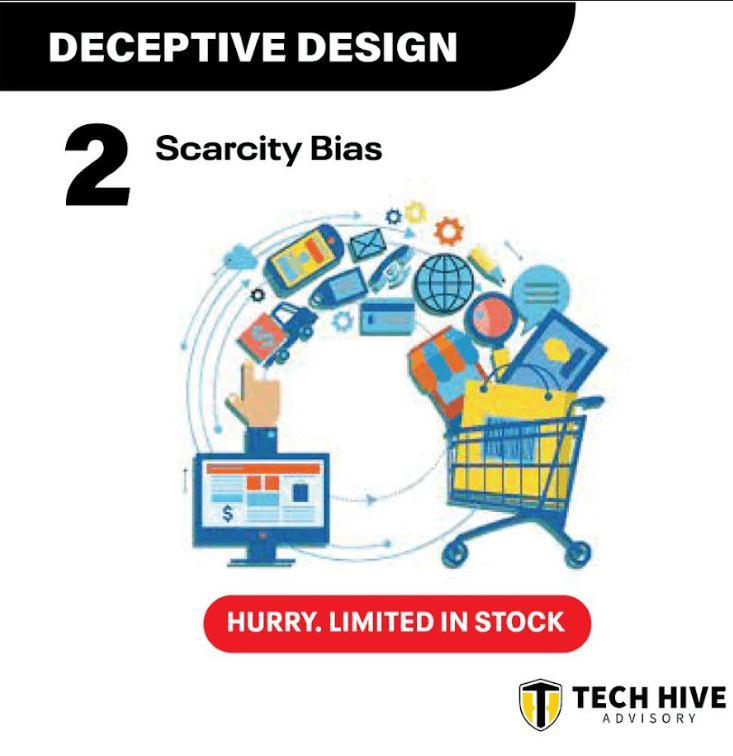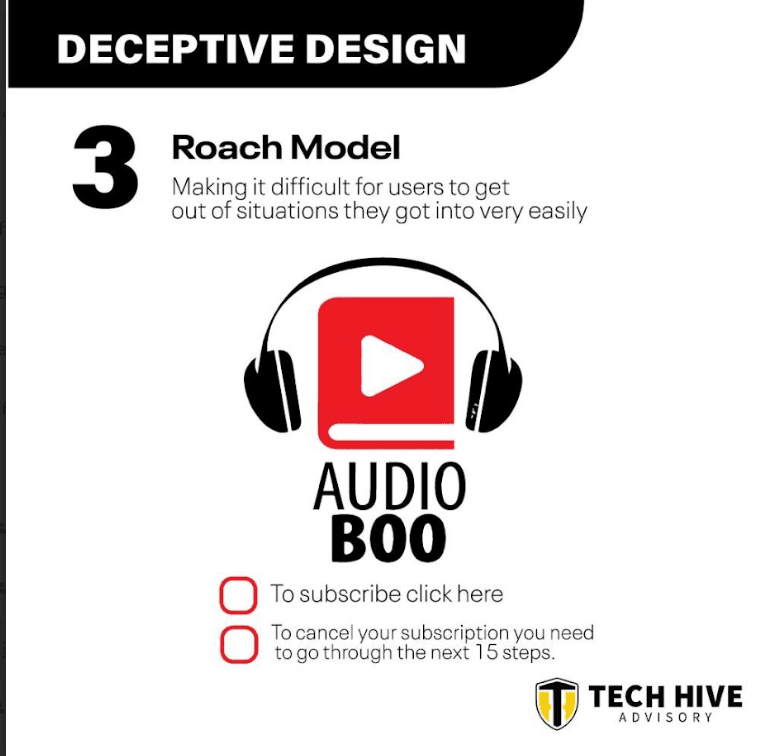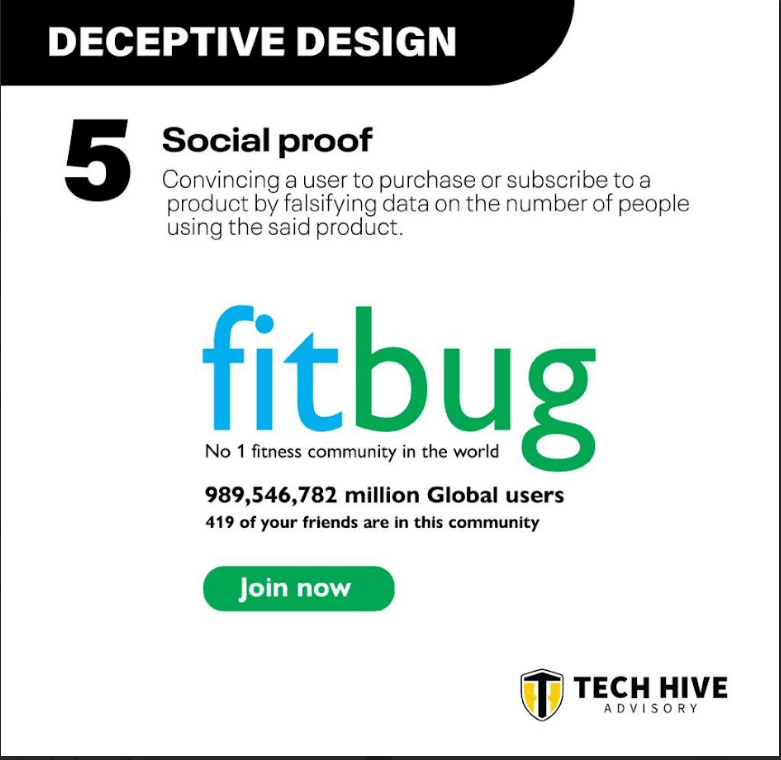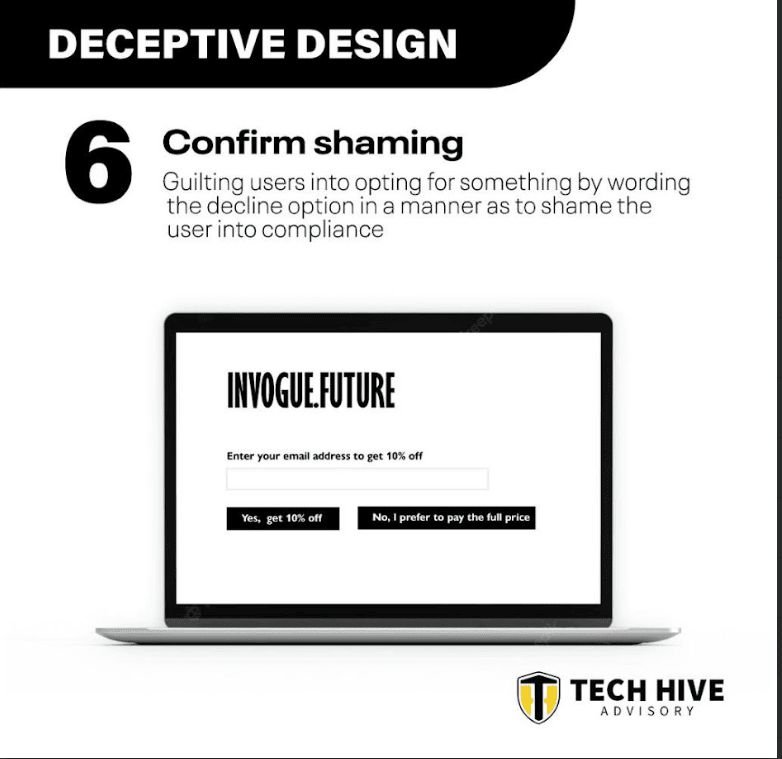Click here to read a summary of the August edition of the Hive Pulse Point series
Introduction
When people interact with digital technologies, their choices are often guided in specific directions through user interface designs. These design techniques can be helpful, allowing users to find information more quickly or complete tasks more efficiently. However, some designs can mislead, manipulate, or trick users into decisions that benefit service providers rather than the users themselves. The August Edition of the Hive Pulse Point on Deceptive Design and Consumer Protection: Exploring the Ethics of Retaining Consumer Attention examined the concept of deceptive design and how digital service providers monetise user attention. The conversation explored how design choices influence consumer behaviour, the ethical questions these practices raise, and their impact on consumer trust, autonomy, and fairness.
Understanding Deceptive Design in Everyday Digital Experience
Deceptive Designs are user interfaces that have been carefully crafted to trick users into doing things they did not mean to, such as buying or signing up for something. They are practices that materially distort or impair, either on purpose or in effect, the ability of recipients of the service to make autonomous and informed choices or decisions. Such practices can be used to persuade recipients of the service to engage in unwanted behaviour or make undesired decisions that have negative consequences for them. Deceptive designs often appear in different forms, sometimes subtle and sometimes obvious. Examples include confirm-shaming, where pop-ups use guilt-inducing language to pressure users into acceptance; forced action, where opting out of services requires tedious steps such as completing lengthy surveys; and hard-to-cancel patterns, where cancellation buttons are deliberately hidden. Deceptive pricing schemes, hidden charges, and misrepresentation of product quality are also common tactics.
Colour manipulation is another instance, where design uses brighter, attractive colours to draw users toward less favourable options while masking alternatives in duller shades. Framing techniques also nudge users to perceive certain decisions as more beneficial than they are.






How Deceptive Designs Exploit Human Psychology
The digital environment is built on capturing and retaining human attention. Deceptive designs exploit natural cognitive biases and psychological triggers, making them highly effective in shaping user behaviour. Design fundamentals such as colour, text, and layout tap into human perception and response. For instance, red conveys urgency, creating pressure to act quickly, while false scarcity cues and “fear of missing out” strategies encourage impulsive decisions. Techniques such as bait-and-switch, fake testimonials, and deliberate obstruction further manipulate users into choices they might otherwise resist.
Ethical Boundaries Between Legitimate Marketing and Harmful Practices
Persuasion is a normal part of marketing, but deceptive design often pushes beyond persuasion into manipulation. It undermines consumer protection and data protection principles such as transparency, fairness, and data minimisation as provided under Section 24 of the Nigeria Data Protection Act 2023 (NDPA) and Article 15 of the Nigeria Data Protection Act General Application and Implementation Directive 2025 (GAID). Practices like misrepresentation or social proofing with fake testimonials create environments where users cannot make informed decisions, blurring the line between persuasion and manipulation. This erodes trust in platforms and undermines responsible business practices,. Responsible design must therefore go beyond commercial advantage and reflect the values of openness and accountability.
Although there is no single legislation specifically targeting deceptive designs, several existing legal frameworks provide avenues for regulation. Laws regulating consumer protection, product safety, data protection, competition, and electronic transactions all offer tools to address deceptive practices. For example, the Nigeria Federal Competition and Consumer Protection Act 2018 (FCCPA) takes a stance against dip pricing, a common e-commerce practice. It provides that there must be full disclosure of the information and pricing details of all goods that are displayed for sale. Also, as a standard for marketing products, the Act prohibits service providers from making any form of false representation as to the nature and pricing of the goods in a way that may influence the consumer's decision to purchase the goods. Applying these provisions can cater to some deceptive design practices such as countdown timers, false pricing, and the use of pop-ups that induce the fear of missing out.
Towards a Safer and More Transparent Digital Experience
From the perspective of product designers, the absence of explicit laws does not negate the responsibility to design ethically. Incorporating user-centred safeguards from the development stage, such as child-protection features in applications, is one way to promote responsible design. Testing products thoroughly before deployment also reduces risks of embedding manipulative features.
For regulators, the path forward lies not in multiplying laws but in strengthening enforcement and standards derived from the existing legal framework. This includes mandating design impact assessments, creating independent audit processes for digital service providers, and establishing responsive reporting mechanisms for deceptive practices. Periodic publication of research, investigative reports, and enforcement actions can also help build public trust and accountability.
Conclusion
Deceptive design is more than a design choice; it is an ethical and governance concern that strikes at the heart of digital trust. Protecting consumers requires a collective effort: businesses must embed transparency in their design processes, regulators must enforce existing protections creatively, and consumers must cultivate awareness of manipulative tactics.
This article is based on the Hive Pulse Point Series event moderated by Olamiposi Aluko, with Samuel Obadina, Rachael Olujimi and Ridwan Oloyede as panellists. We thank the guests for their time and input. You can catch up with the session recording here.